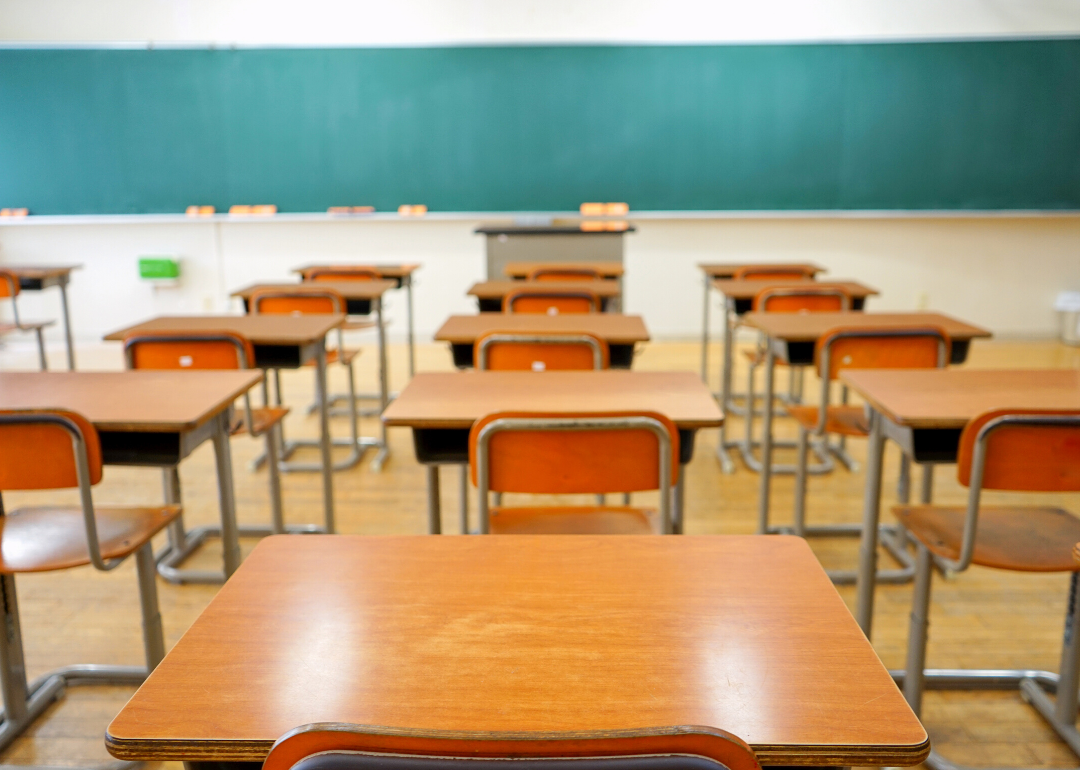
How much it could cost to reopen schools
How much it could cost to reopen schools
The estimated cost for an average school district in the U.S. to reopen this year amid the coronavirus pandemic is $1.8 million, or about $490 per student, according to a June 2020 report from the Association of School Business Officials (ASBO) International and the School Superintendents Association. Stacker mined that report's estimated costs; specifically, 15 different supply and staffing needs as they relate to additional needs for safe reopenings at districts around the country.
For the purposes of these estimates, the average district represented in the report has 3,659 students, 329 staff members, 183 classrooms, 40 school buses (transporting at 25% capacity), and eight school buildings, as per a Governing report examining public school districts in the 2013–2014 school year (the most recent year of data available). ASBO's calculations on school bus needs, including general fleet sizes and average pay for drivers, are based on numbers from the 2018 District Fleet Survey. Calculations on staffing and supply needs to keep schools clean and stocked with personal protective equipment (PPE) are based on analysis from the National Council on School Facilities, which held working groups about reopening during COVID-19 from April 2 to June 4, 2020.
"The additional costs to safely reopen schools are significant but will vary widely by district," Elleka Yost, ASBO's government affairs and communications manager, told Stacker, saying ASBO's projected numbers cover "some of the extra costs districts could incur for abiding by basic health and safety guidelines" without being exhaustive. Yost added that school districts around the U.S. will incur multiple other costs no matter what their reopening plan is. "This includes technology expenses to provide Internet access to students via WiFi hotspots, digital devices, and enhanced online instruction; nutrition expenses to feed students in classrooms instead of cafeterias and deliver meals to students' homes; health care expenses to provide counseling, mental health, and other social-emotional supports for students and staff; facility expenses to make necessary repairs and upgrades to improve ventilation and indoor air quality, install handwashing stations, and modify spaces to support physical distancing via partitions or dividers. The list goes on and the costs are astronomical. Districts cannot and should not bear these financial burdens alone—our students, teachers, administrators, and parents need Congress' help."
A June 2020 study from the U.S. Government Accountability Office found that an estimated 54% of public school districts need to fix multiple building systems, including 41% of districts that need to update or replace heating, ventilation, and air conditioning systems. Numbers in this report further do not consider the cost of rehauling curricula to address the pandemic and potentially teach remotely, or the cost of supporting students and teachers who fall ill. All that aside, the $1.8 million baseline for added district costs runs counter to virtually all districts' annual budgeting and may prove unattainable if reopening schools doesn't come with a federal bailout. Keep reading to see the breakdown of costs for an average American school district to reopen during the pandemic.
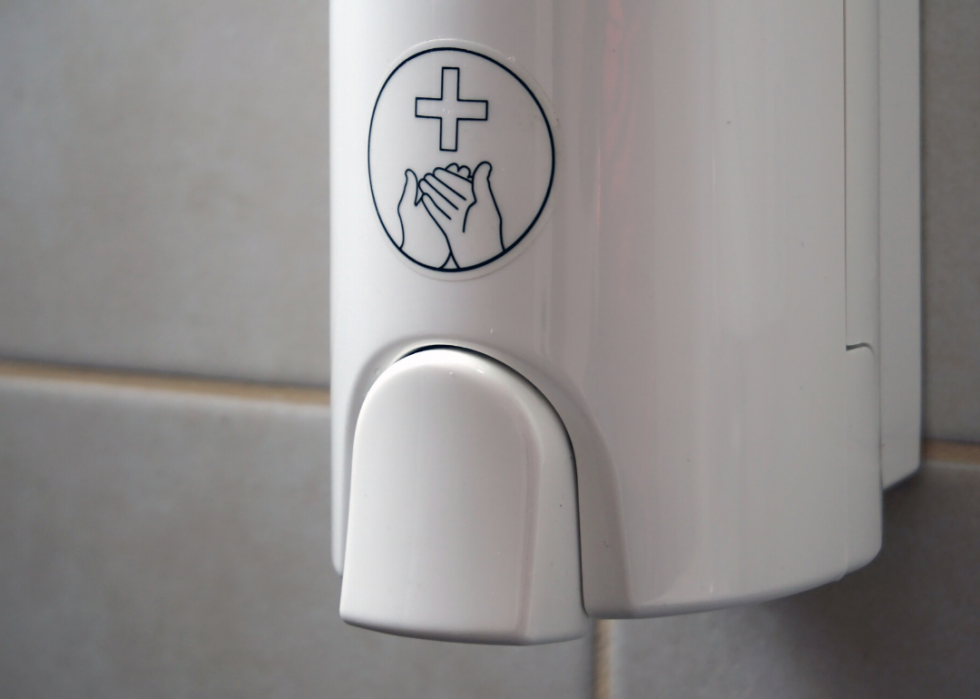
Hand sanitizers for classrooms: $39,517
Washing hands with soap and water continues to be the best way to prevent contact spread of COVID-19, according to the Food and Drug Administration (FDA). In situations without available soap and water, as is the case in most classrooms, hand sanitizer is the next best thing. To underscore the volume of hand sanitizer this requires for individual districts, the Saint Louis Public School District has invested in more than 2,600 gallons of hand sanitizer for the start of the 2020–2021 school year.
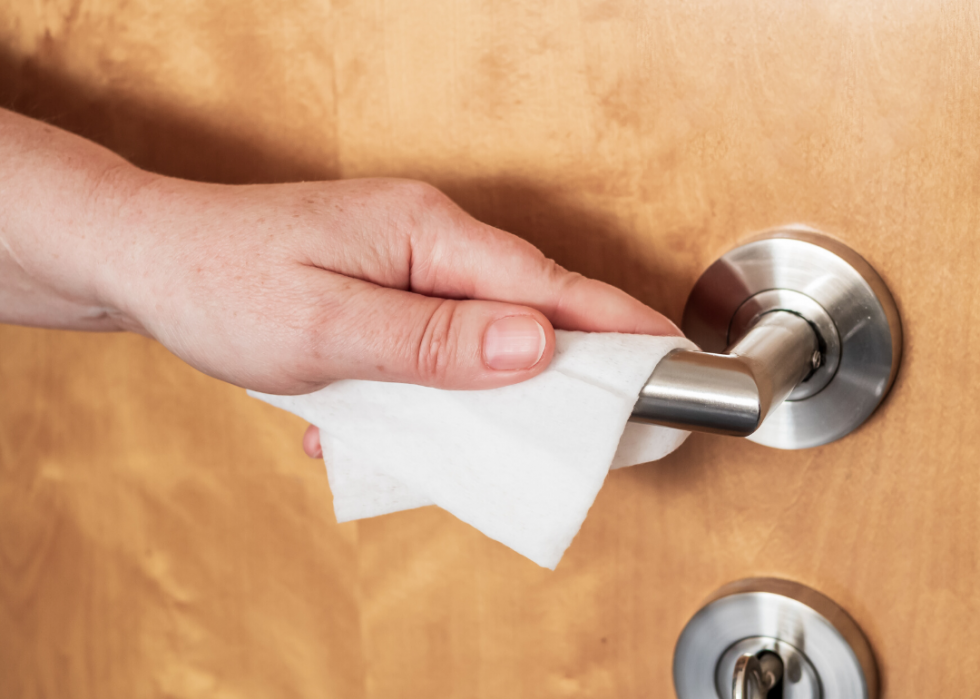
Disinfectant wipes for classrooms: $16,833
Disinfectant wipes will be a necessary part of keep classroom surfaces COVID-19-free. It’s assumed that each classroom will go through four wipes per day as teachers work keep surfaces clean.
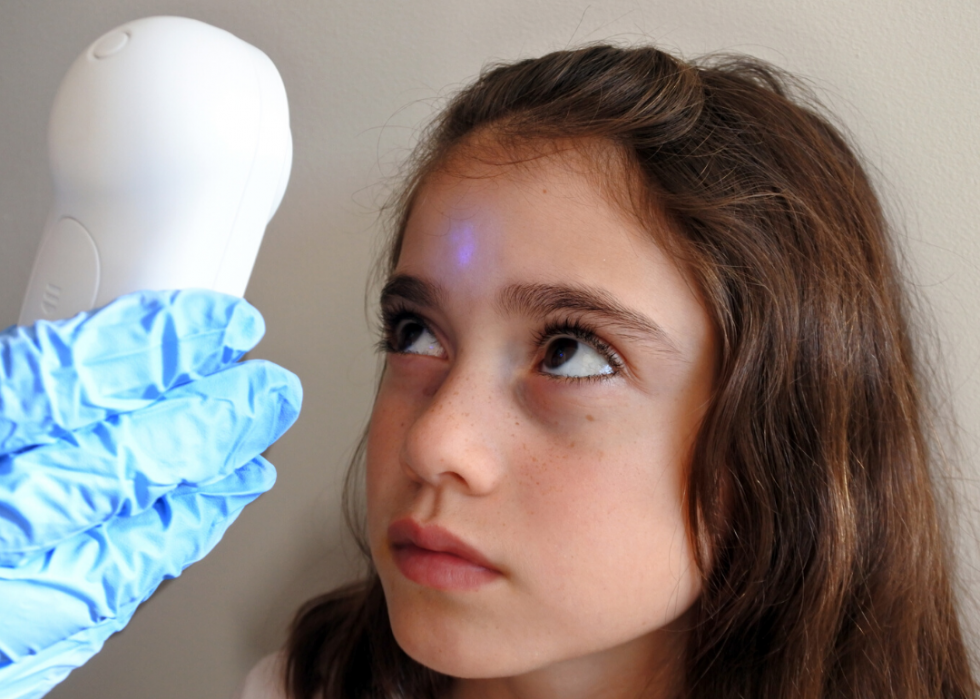
No-touch thermometer: $640
Students will need to be regularly screened for fevers, with each school needing at least one no-touch thermometer. Many districts will require temperature checks before granting students and staff entry into buildings. Some districts are investing in thermal cameras for the same purpose.
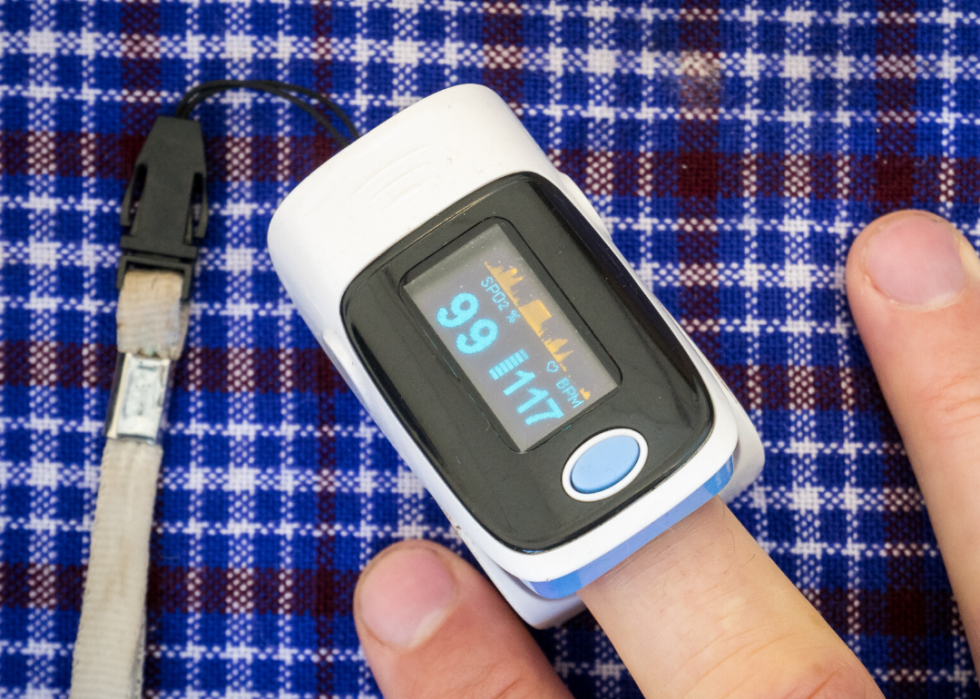
Oximeter: $360
A pulse oximeter clips to the tip of a finger to measure a person’s level of oxygen saturation and heart rate. Each school in the country would need to issue one oximeter to the school nurse, as low oxygen levels can be an indicator of COVID-19.
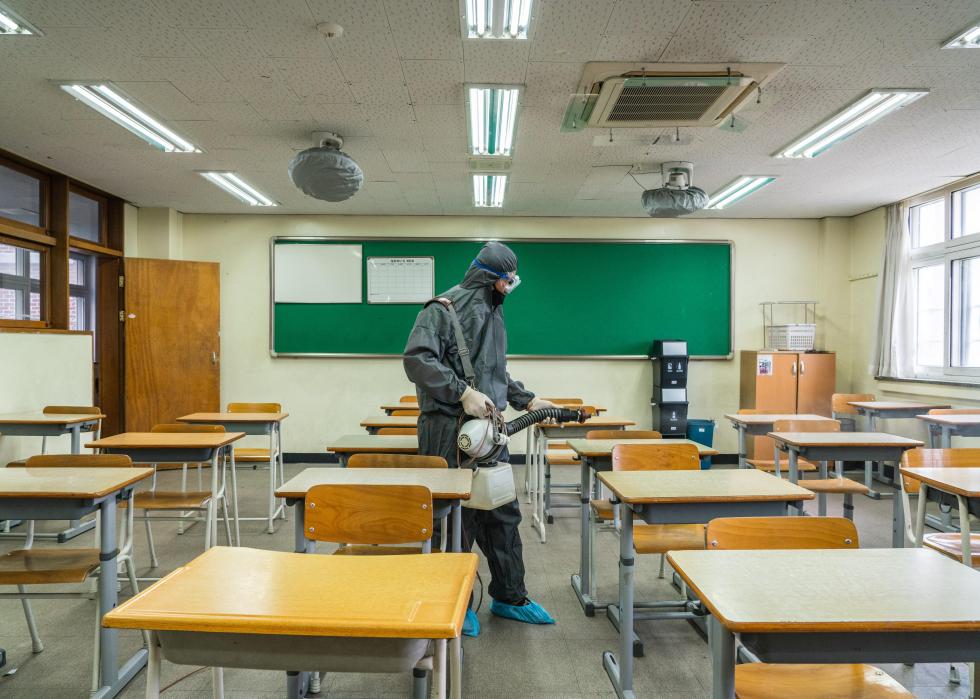
Electrostatic disinfectant sprayers: $33,600
Electrostatic sprayers atomize disinfectants and create a positively charged spray that's drawn to surfaces with a force greater than gravity. The high-impact spray can efficiently coat even hard-to-reach surfaces, from gym equipment to classroom desks.
You may also like: States receiving the most PPE from the federal government
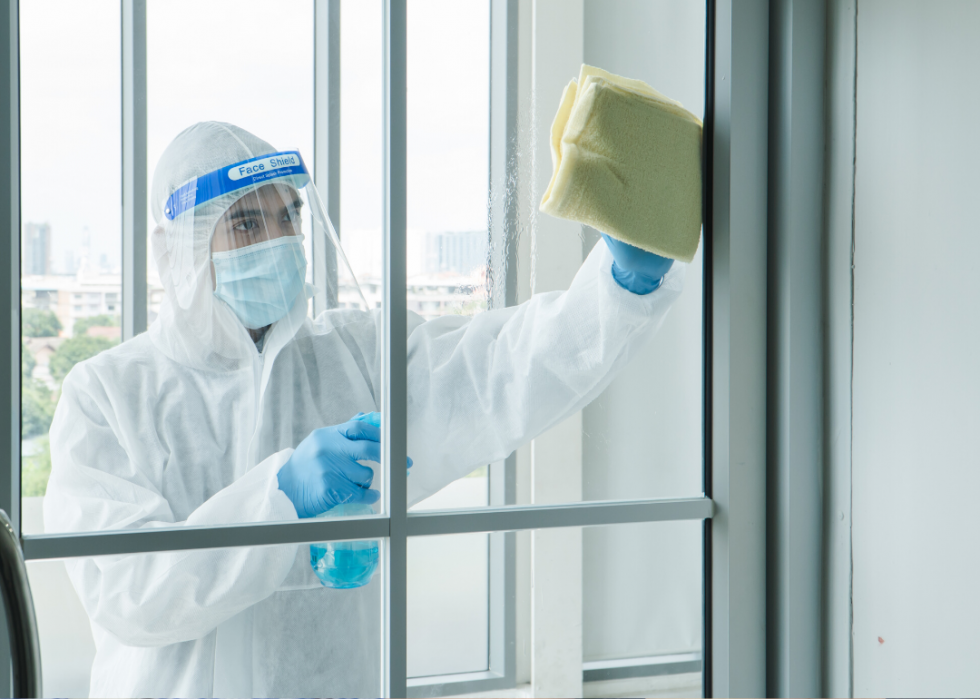
Deep cleaning of school after a confirmed case: $26,000
The CDC suggests a seven-prong system for cleaning a facility following a confirmed case of COVID-19. These include completely closing off any areas occupied by the person with a confirmed case; disinfecting and cleaning every item or space used by the sick person (including vending machines, carpets, tables, and light switches); and vacuuming the space with a high-efficiency HEPA filter.
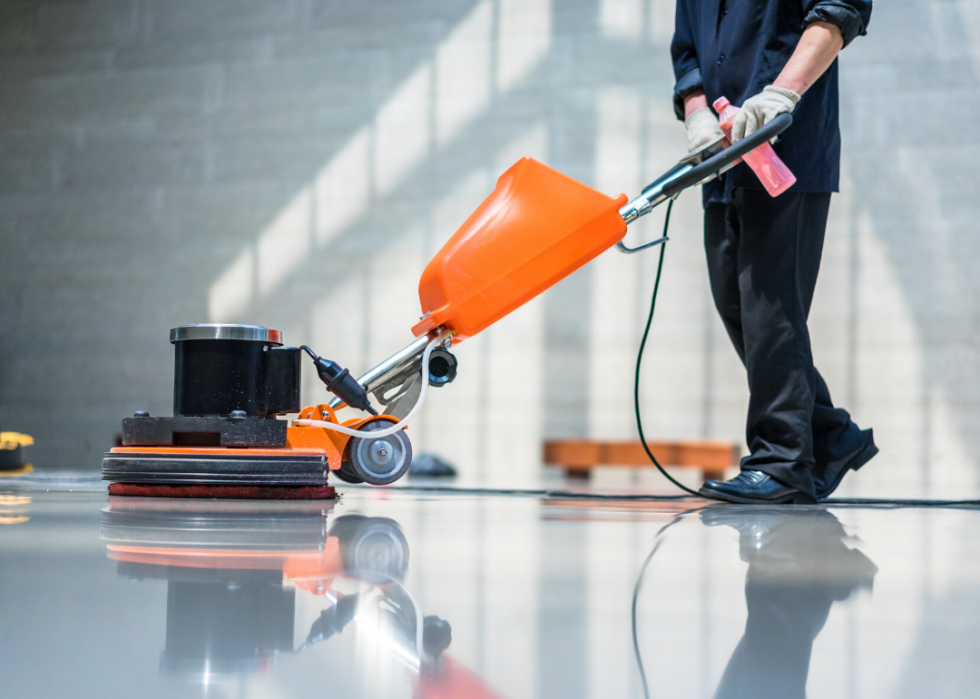
Additional custodial staff: $448,000
For the additional vigilance required to keep schools and buses COVID-19-free, all districts will need additional custodial staff. Many districts are also providing additional training to custodial staff including new equipment and cleaning products that will be made available.
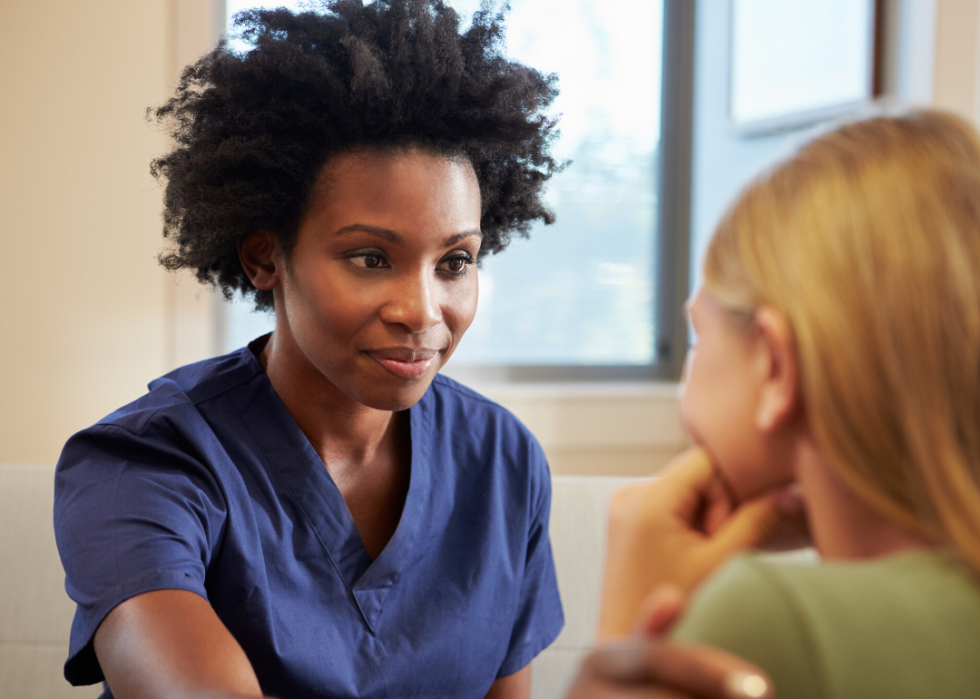
Ensuring nurses in every school: $400,000
More than 60% of public schools in the U.S. in 2018 didn’t have a full- or part-time nurse on staff, according to the National Association of School Nurses. The American Academy of Pediatrics in June released guidelines for the reopening of schools that included a recommendation for a school nurse or nurse aide to be available at every school to administer temperature checks.
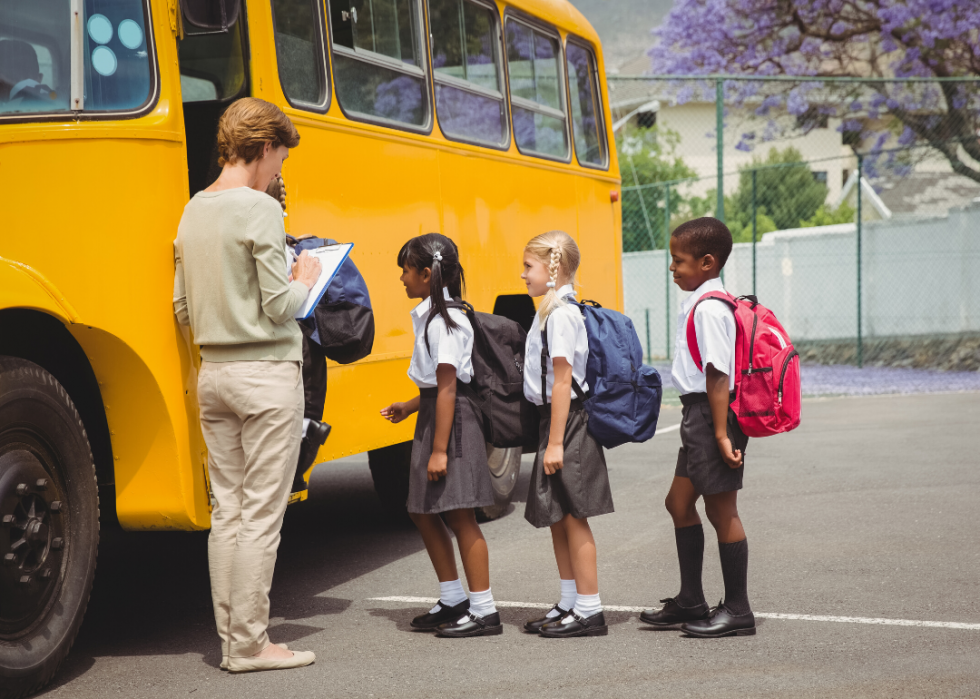
Aides to screen temperatures on school buses: $384,000
One aide per school bus would be necessary to screen all students before boarding and make sure social distancing guidelines are being followed during transport. These required health-checks are rife with issues, however, from figuring out a way to screen temperatures for 50 students and still get to school on time, to what would happen if a student has a fever and is on the side of the road without a guardian to walk them back home.
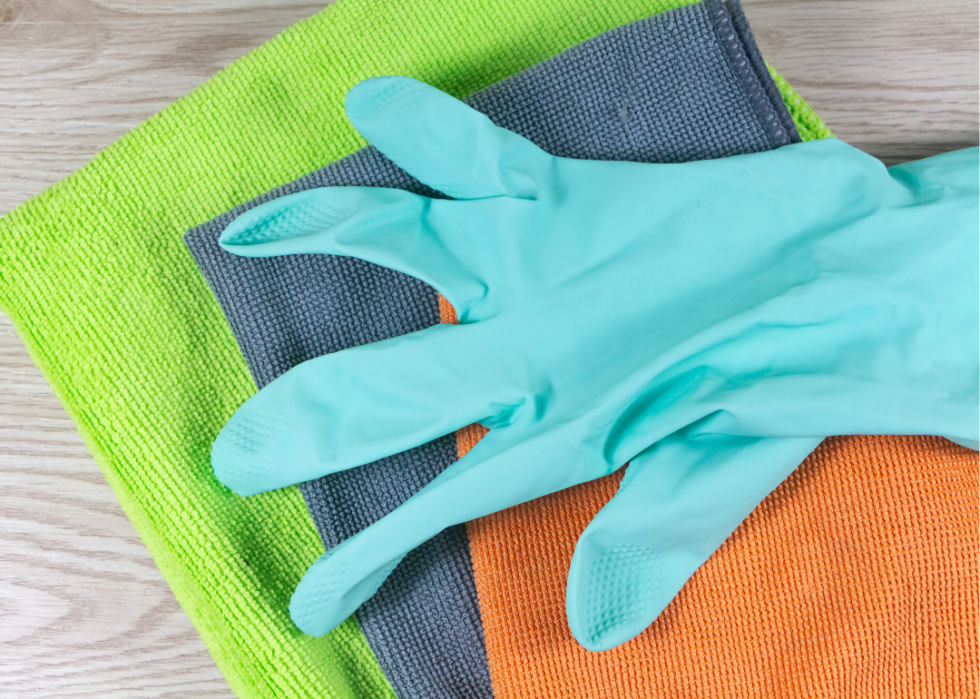
Gloves for custodial staff: $1,440
At a rate of one custodian per 20,000 gross square feet of facility, each custodian is expected to go through about five pairs of gloves every day as they switch PPE between tasks. Custodial staffs will also be expected to follow a timetable for disinfecting surfaces throughout the day and are encouraged to follow certain hacks for minimizing surfaces being touched, including keeping doors open.
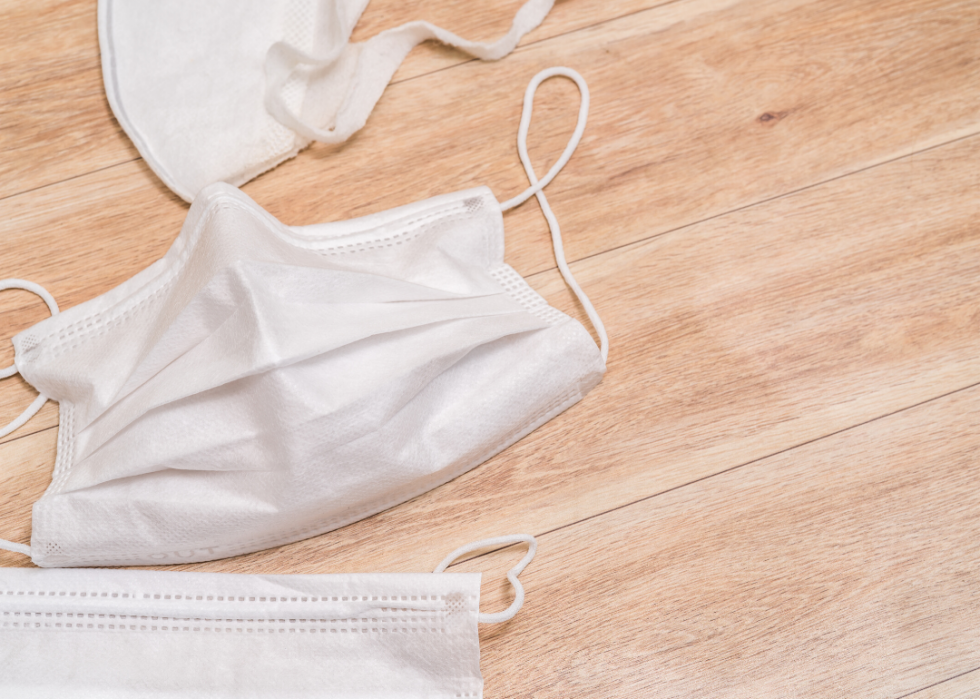
Disposable masks for school staff: $44,415
Masks for school staff will be a requirement that is expected to cost the average district more than $44,000, as disposable masks ought to be replaced anytime they become damp and shouldn’t be worn more than one day.
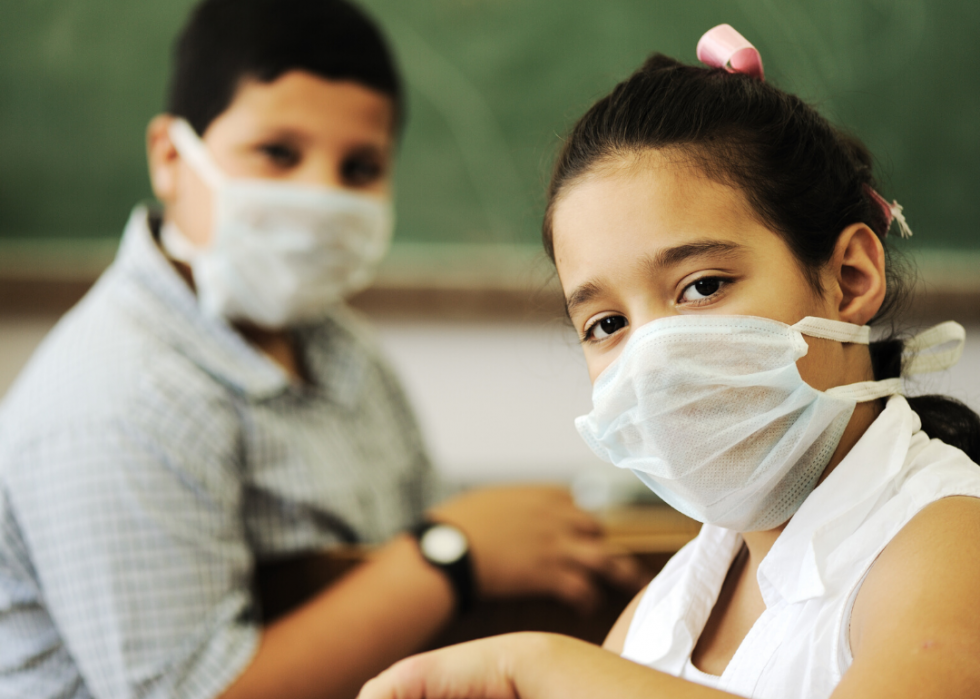
Disposable masks for students: $148,190
In addition to faculty and staff, students will need to have masks for in-person learning. While some will bring masks from home, it’s estimated that about 30% of the student body will need masks provided by the district.
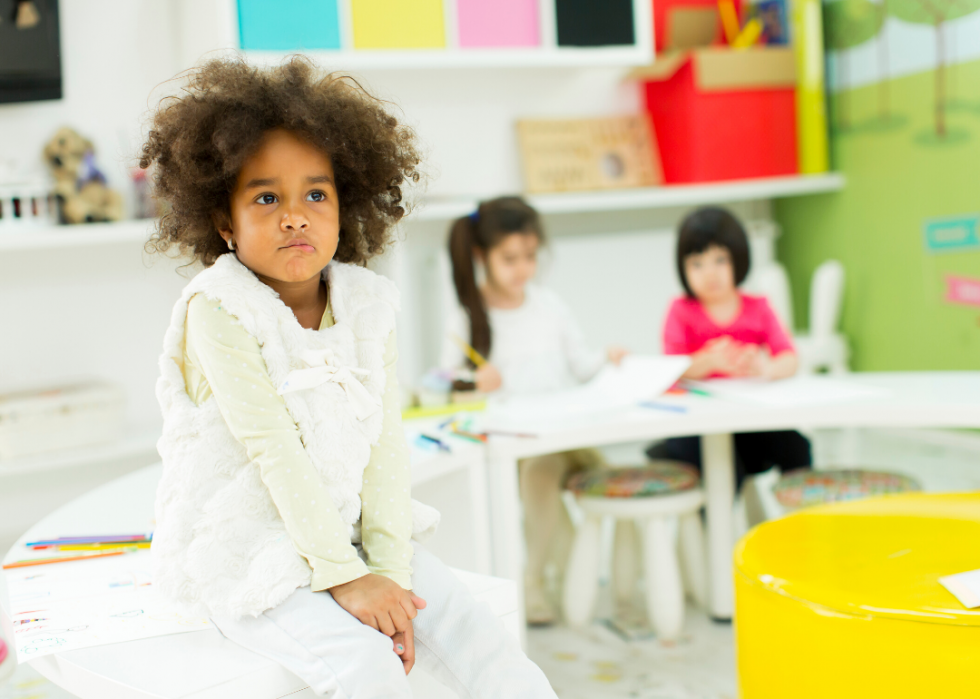
Before/after school child care programs: $168,750
Child care programs for before and after school will come with enhanced cleaning protocols and strict social-distancing guidelines. Plans were introduced in mid-July for New York City schools that would expand city-sponsored child care programs for 100,000 kids from pre-school to eighth grade.
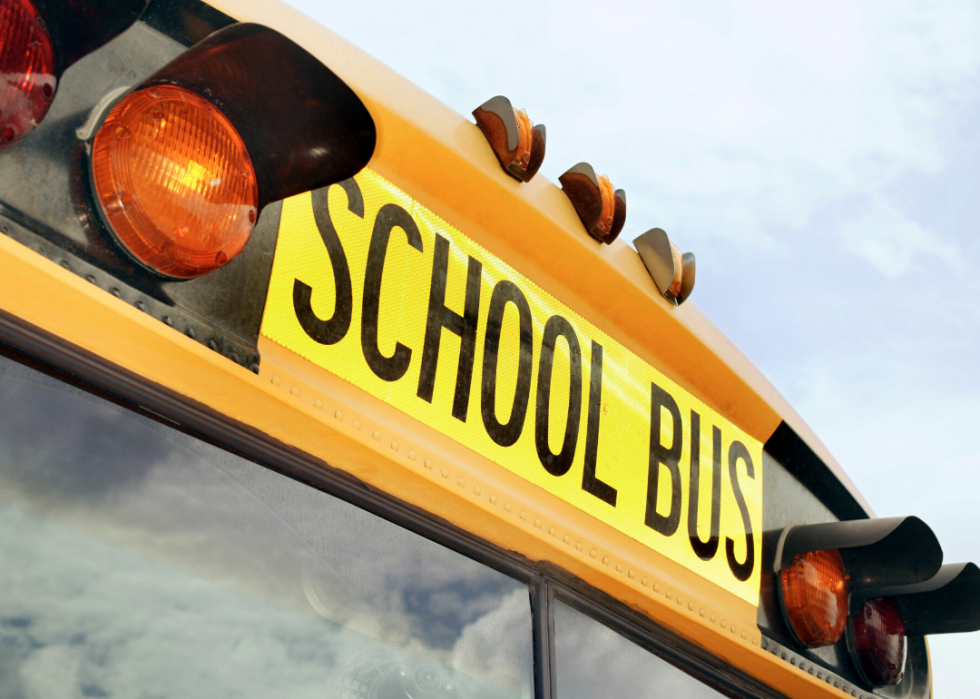
Fog machines and cleaner for buses: $55,860
Fog machines are capable of disinfecting spaces quickly without the hassle of spraying and wiping down every square inch of a space. Putnam High School in Putnam, Connecticut, was able to disinfect the entire cafeteria in less than three minutes using a fog machine.
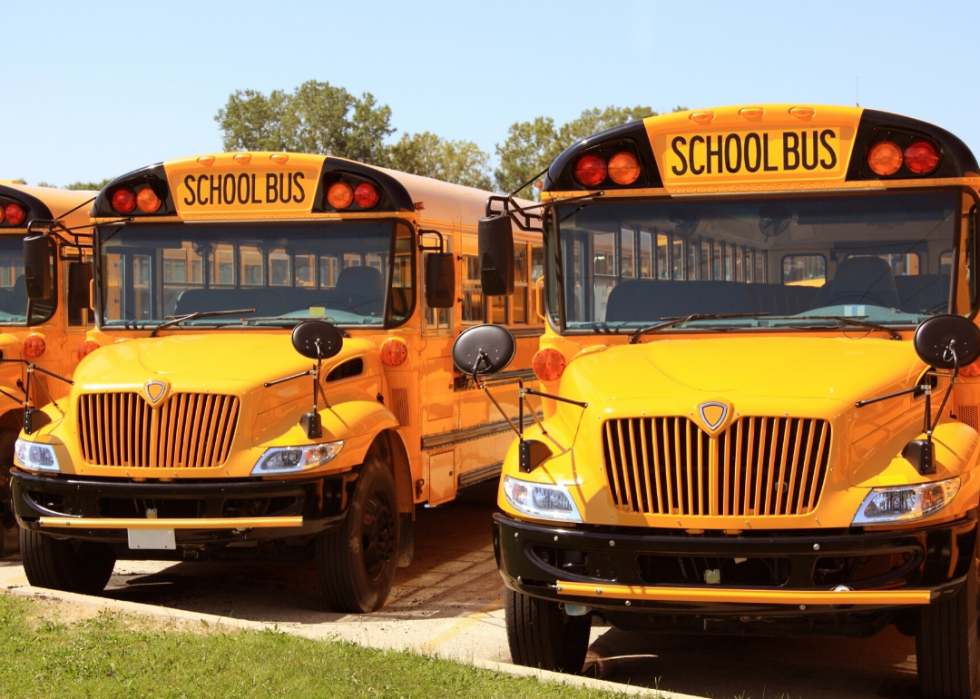
Hand sanitizers for buses: $10,534
It's recommended that, following a clean health check prior to boarding the school bus, all students use hand sanitizer to further ensure a COVID-19-free space. In addition to these protocols and social distancing requirements, students riding on buses would further be required to wear masks.



